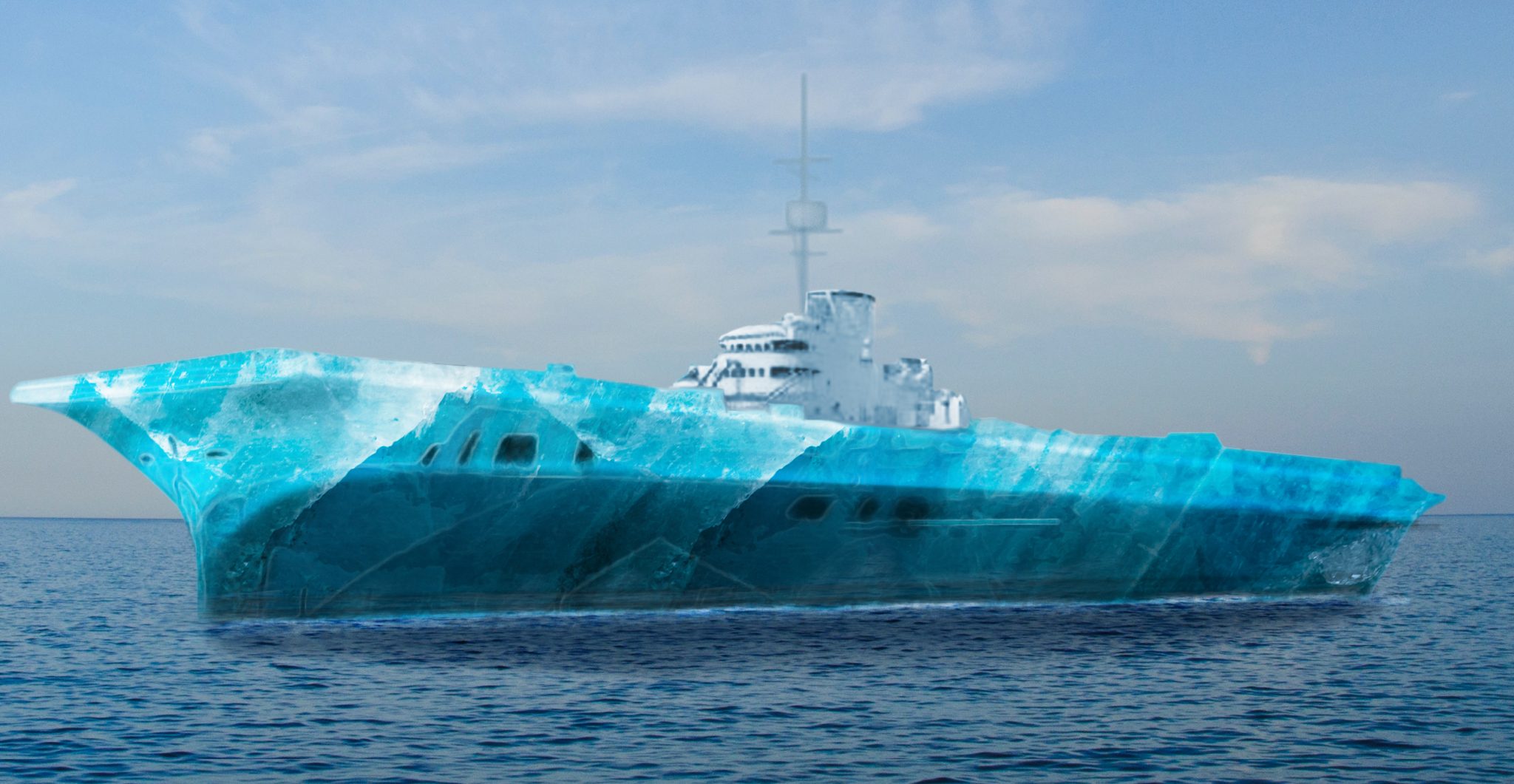In WWII the British were desperate. Metal was in short supply, and German U-boats were sinking Britain’s lifeline – ships. The Allies needed an unsinkable craft; one made with something other than steel, would not detract from the war effort, could be quickly built, and above all, cheap. The answer, of course, was inspired by the Bible.
In early 1943, Admiral of the Fleet, Louis Mountbatten rushed into British Prime Minister Winston Churchill’s bathroom babbling about a new invention. The portly Churchill followed more sedately in his bathrobe, complaining about the water in his tub getting cold, but Mountbatten did not care.
In the admiral’s hands was a rough, beige-yellow block called pykrete – roughly 86% ice and 14% sawdust. He put it in the warm tub then stepped back.
“Well!?” huffed the prime minister. “Just wait” was the reply.
They did just that. Minutes later, Churchill’s eyes widened as he understood the implications of what he saw. The block of mostly ice kept its shape and size despite the warmth.
“It is very strong,” said Mountbatten. “Impervious to bullets. Might work with torpedoes, too.” “And in the northern seas…” Churchill sighed dreamily, his bath forgotten.
The genius behind pykrete was Geoffrey Nathanial Joseph Pyke, after whom it was named. A troubled Jewish inventor, he first entered the limelight because of one of his studies – how to escape from a POW camp. To learn how he traveled to Germany during WWI and got himself arrested.
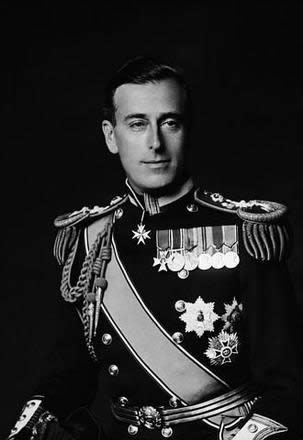
After studying his prison and its guards, he simply walked out and made it to the Netherlands. From there, he reached Britain and became a celebrity – as he had also made a detailed study of Germany before his capture.
In 1939, Pyke again returned to Germany and conducted a poll to find out how Germans felt about their government. He hoped to present his findings to Hitler but was convinced otherwise for his own safety.
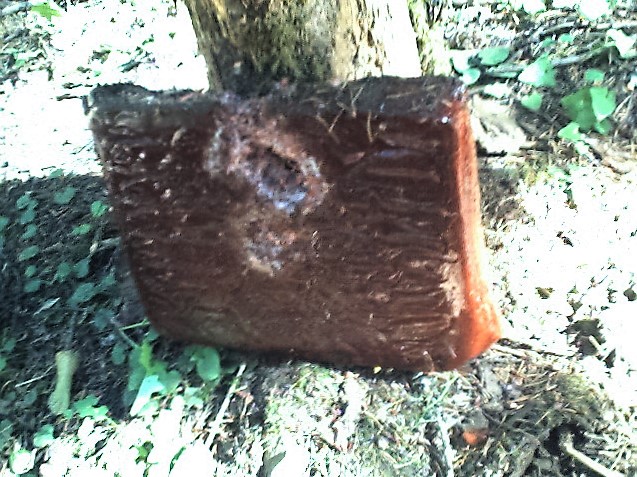
When WWII broke out, he turned his incredible mind to the issue of defeating Germany with limited resources. This was how he came to the attention of Mountbatten and others in the War Ministry.
One of his ideas was a screw-propelled device to carry soldiers across snow and ice. It led to Operation Plough (a US-Canadian unit trained for winter conditions) and the creation of the M29 Weasel.
It was in 1942 that Pyke faced another problem – how to prevent ice from forming on ships in the Arctic. He never solved that problem, but he did come up with another fantastic idea. In September of that year, he sent Mountbatten a 232-page report on his most ambitious concept. The War Office was intrigued.
Pyke named it Project Habakkuk from the Bible. He was the prophet who teleported into Daniel’s cell before the latter was to be fed to the lions. Habakkuk had questioned god’s goodness and asked why he did nothing in the face of human suffering.
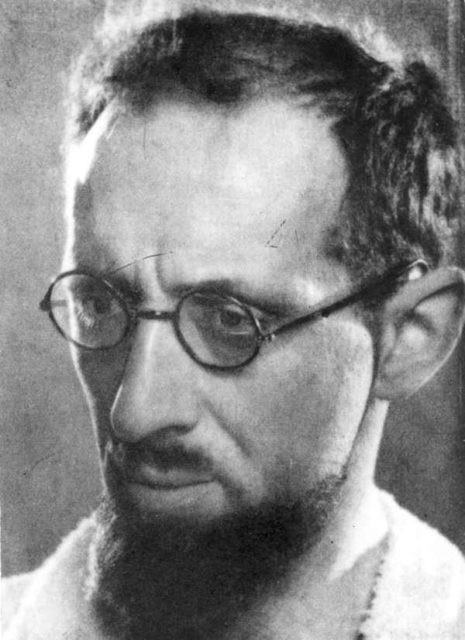
Pyke preferred to be more proactive, so he proposed an aircraft carrier 2,000-feet long and 300-feet wide – made entirely out of ice. It would weigh about two million tons, and if bullets and missiles destroyed some of it, then it could be easily and cheaply repaired. Better yet, it needed no fuel to stay afloat.
The ship was to have an airstrip capable of holding 150 fighter planes and twin-engined bombers. For weapons, it would have 40-dual-barreled gun turrets, as well as anything they needed against German ships, planes, and submarines. Simply find an iceberg and carve it out!
There were, however, two problems. Ice tips over in water and is fragile. The idea was abandoned, but the Americans were now intrigued. Herman Francis Mark (a chemist and early contributor to polymer science) solved the problem. Ice becomes more durable and flexible if sawdust, paper shreds, and wood chips are added.
Done properly, it could be as strong as concrete, more buoyant, and slower to melt than pure ice. Better yet, it could be cut and shaped just like wood. Theoretically, an aircraft carrier could indeed be built out of it.
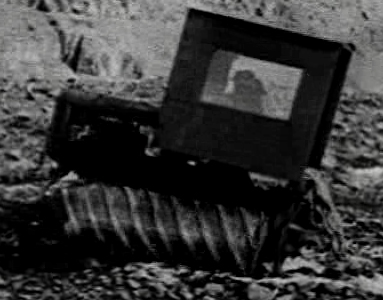
Models were constructed beneath London’s Smithfield Meat Market to make use of their frozen meat lockers. It was promising, so they made bigger models in Canada’s Jasper National Park. Later, they made a 1,000-ton, 60’X30’ model at Patricia Lake in Alberta and fired salvos at it to see how it stood up to bullets and explosives.
After more tweaking, Canadian engineers felt they could make a 1,000-ton model and have something workable by 1944. Churchill was ecstatic and ordered one ASAP, promising the Canadians even more business if they could pull it off.
There was one problem they could not get around – “cold flow,” also called “creep.” This is when solid objects deform because of mechanical stresses, especially when heated. Arctic temperatures change, and as people, equipment, planes, and weapons were to be loaded onto the carrier, it would buckle and warp.
As such, Pyke concluded it could not be achieved, but Mountbatten refused to give up. Attending the First Quebec Conference in mid-August 1943, he presented Pykrete to the attending Allied generals. To prove it was bullet-proof, he shot it with his gun… the bullet ricocheted against Admiral Ernest King’s leg!
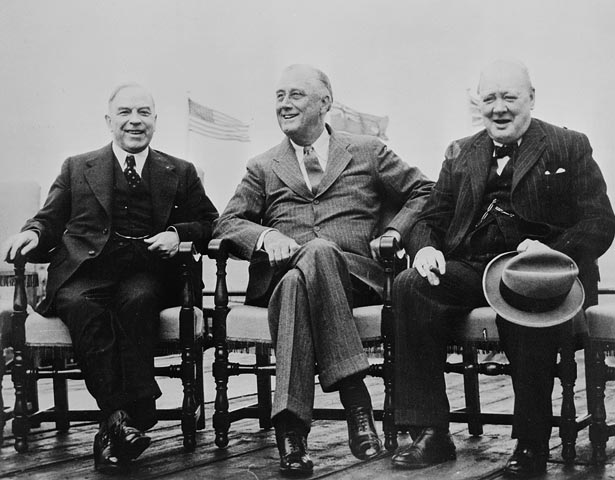
Despite that, the Americans were impressed. Such a ship would allow them to attack Japan from the Aleutian Islands. They could save lives and avoid brutal jungle warfare! Given that Pyke had already clashed with the Americans over Project Plough, he was removed from the project.
Another $3,128,750 was put into Habakkuk before the Canadians started having doubts. The military wanted a pykrete ship with a range of 7,000 miles and be able to stand up to the biggest waves. They also wanted it torpedo-proof and able to support heavy bombers.
That meant a rudder over 100 feet high, a hull at least 40 feet thick, and a deck at least 2,000 feet long. To do that, they needed metal beams. They also needed to figure out how to mount a rudder that big.
They still had not solved the issue of creep. Not without expensive refrigeration and insulation.
By then, the war was turning in the Allies’ favor. Without America’s vast resources and massive industrial might, building an experimental pykrete aircraft carrier was no longer practical.
